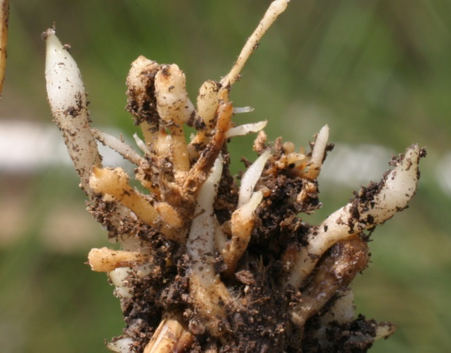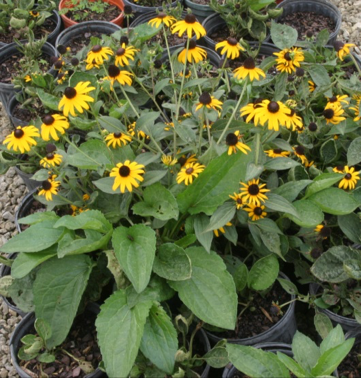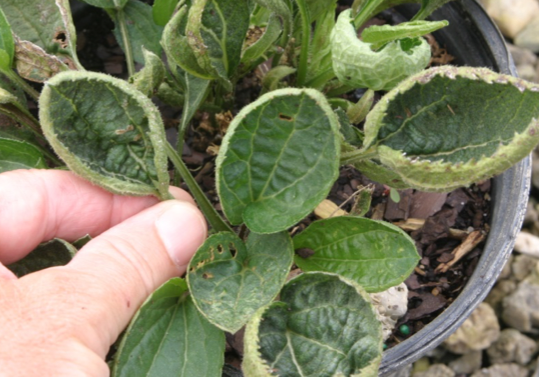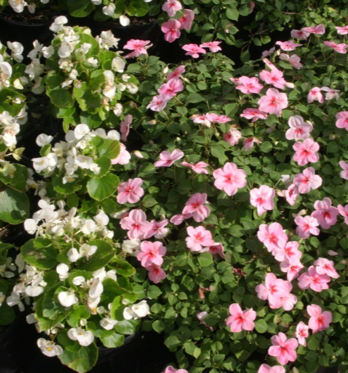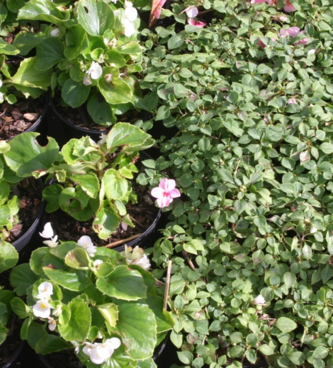Problem
Herbicide injury caused by root-inhibiting herbicides such as dinitroanilines (including benefin, oryzalin, pendimethalin and trifluralin) and pyridine (such as dithiopyr).
Plant Entry
Root inhibitors are soil applied, preplant incorporated (ppi), at planting or post-transplant preemergence and assimilated by roots of germinating seeds (radical or seminal) and/or shoots prior to soil emergence. There is minimal to no translocation. Annual grasses are the primary target but some small-seeded broadleaf weeds are also controlled.
Crops injury may occur from soil residual carryover from previous crops, excessive doses from misapplication or inaccurate sprayer calibration or foliar exposure. Cool, wet conditions are conducive to injury to some crops by soil-applied dinotraniline herbicides.
Symptoms
Symptoms from root exposure:
- Typically, sensitive plants either do not emerge or lodge shortly after emergence
- Reduced root numbers
- Swollen and stubby roots in grasses (mitotic inhibition)
- May increase sensitivity to stress-related plant diseases
Symptoms on foliage and stems when contacted by spray applications:
- Swollen and brittle stems in broadleaf plants (mitotic inhibition)
- Foliar absorption may cause deformed and “puckered” new growth
- When applied at or near flowering, the number of flowers can be reduced

Turnip crop with stand thinning and stunted growth from Trifluralin at 3 pt/A 35DAT.
K. Jennings CC BY-NC-ND 4.0

Turnip yield can be decreased by dinitroanaline herbicides such as trifluralin.
K. Jennings CC BY-NC-ND 4.0
Affected Plant Parts
Root inhibiting herbicide injury symptoms are often not observed as the roots of sensitive seedlings are quickly injured following emergence from the seed. Stems of sensitive plants that happen to emerged from the soil are weak and will soon lodge. Higher doses of dinitroaniline could present carryover for sensitive crops resulting in stand reduction and stunted growth. Some herbicides in these two families have up to 120 days half-life adding carryover concern. Stems of sensitive plants may be girdled at the soil line resulting in sudden wilting, stem breakage and death of treated plants. Foliar treatment can damage the youngest foliage present at treatment time, stunting bud development; older foliage and other buds are generally not affected.
Similar Problems
Root inhibitor injury may be confused with symptoms from:
- Urea or high-salt fertilizers applied at planting can damage roots resulting in seedling death.
- Stand reduction may resemble injury from parasitic nematodes or soil-borne diseases.
- Similar stem girdling may be caused by cellulose synthesis inhibitor herbicides like indaziflam.
- “Puckered” foliage may be similar to aphid damage, foliar damage from isoxaben, or early symptoms from synthetic auxin herbicides.
Herbicide Mode of Action Category
WSSA – 3
HRAC – K1
Useful Resources
North Carolina Agricultural Chemicals Manual
Southeastern US Vegetable Crop Handbook
Weed Management in Nurseries, Landscapes & Christmas Trees Information Portal
Applied Weed Science: Including the Ecology and Management of Invasive Plants (3rd Edition), Merrill Ross & Carol Lembi, pages 168-169, 179-180, 279-283
Publication date: May 10, 2016
N.C. Cooperative Extension prohibits discrimination and harassment regardless of age, color, disability, family and marital status, gender identity, national origin, political beliefs, race, religion, sex (including pregnancy), sexual orientation and veteran status.

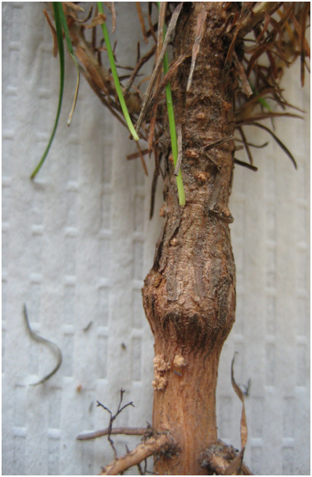
.jpg)

